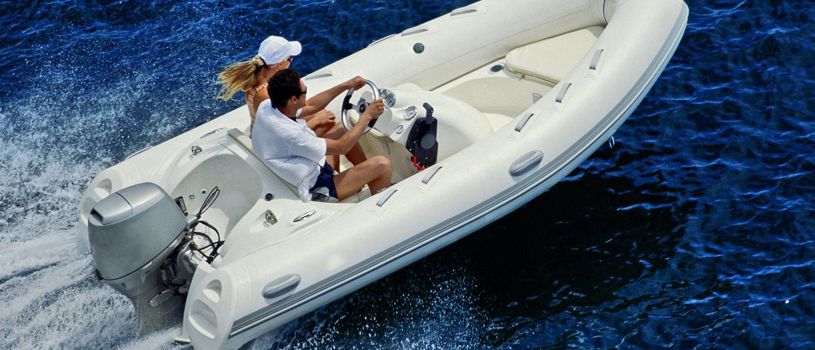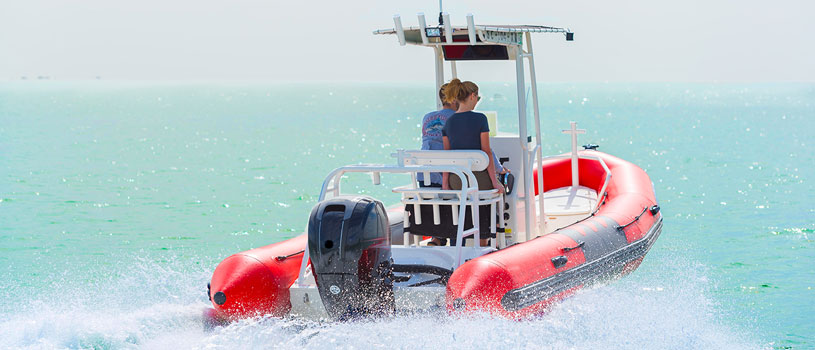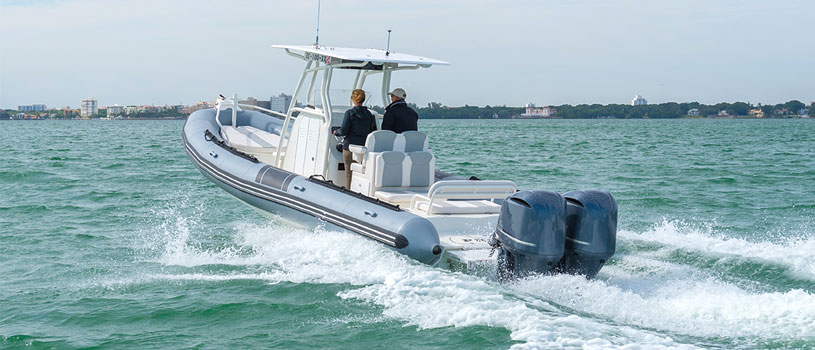inflatables
As their name suggests, inflatable boats take their shape thanks to air, pumped into flexible tubes that form the front (bow) and sides. Durable rubberized, synthetic fabrics like Hypalon, PVC, or polyurethane are used to prevent punctures. A rigid transom (back if the boat) is commonly included to handle a small outboard motor. The floor can be inflated or rigid, the latter formed by assembling wood, plastic or aluminum panels.
A variation on the inflatable is the RIB, or rigid inflatable boat. RIBs feature similar tubes to form the bow and sides, but add a rigid hull (bottom running surface) and floor. This hull allows the boat to handle waves better, and provides a more comfortable ride. RIBs can also typically handle higher horsepower engines.Learn more about …
… which activities you'll most enjoy
Smaller inflatables are often used as tenders for larger boats, emergency rescue craft, as they are relatively quick to inflate/deflate and easily towed or stowed. Larger inflatables or RIBS are often chosen for their increased buoyancy, seagoing reputation, and built-in “bump” protection from docks or other vessels, traits that make them a popular choice with safety and law-enforcement agencies.
… which engine is right for your boat.
Outboard power is the most popular choice for inflatables and RIBs. Quiet and easy to service, outboards create additional room in the main seating area, or “cockpit”, and storage space by positioning the engine behind the back of the boat, also called the “transom”. Outboards can also be fully lifted, or “trimmed”, out of the water, an advantage when using a trolling motor to get into shallow waters.
The smallest inflatables are often powered by the passenger via oars.
Quick Stats
- day cruising
- 6 max
- 2.4 - 9.1 m (8 - 30 ft)
- outboard engine
- sterndrive engine
- jet engine
- trailerable
Dealers and Manufacturers
Sign up to receive information from dealers and manufacturers on various boat types and models.
Contact Dealers and Manufacturers* Price Range varies depending on size, make and model of the boat.







